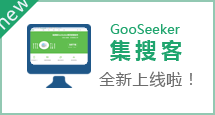OTB是英文Open-to-Buy的缩写,翻译成采购限额、可购额、许购定额等。在MBALib上有个词条OTB计划,其副标题是:OTB计划(Open-to-Buy,采购限额计划)——大型连锁零售企业的管理利器,可见OTB计划的重要性。
摘自MBALib:
OTB(Open-to-Buy),意为采购限额计划。这个计划是用来确定采购限额的。 所谓的采购限额,是在给定时期内(国外通常是1个月)计划采购额与采购 员承诺购买款项之间的差额。它代表着采购员留待当月购买的数量,并且 随每次购买数量的上升而下降。OTB可以根据预估营业额和资金以及商品的 周转率,帮助任何规模的零售业者预测未来12个月中,每项商品的每月采 购计划。
MBALib的这个词条详细讲解了OTB计划制定步骤,这篇长文需要一定时间才能读下来,而Open-To-Buy Planning的讲解简明得多,给出了一个相当简明的计算公式,这个公式是一堆Retail Math中的一个。Open-To-Buy Planning一文还对比了OTB与库存量管理的不同:
OTB is essentially the difference between how much inventory is needed and how much is actually available. This includes inventory on hand, in transit and any outstanding orders.
如果谈论OTB与其它概念的不同的话,或者讨论OTB的应用场合和准确含义,So What Exactly Is An Open-To-Buy?一文值得研读,其核心是:OTB is a financial budget for retail merchandise. 具体含义如下:
- An Open-To-Buy is structured specifically to address the needs of retailers, and is a tool designed to assist retailers manage and replenish their most significant asset, their inventory investment.
- An Open-To-Buy is a budget. It begins with the planning process, is future oriented, provides guidance on how much to buy, and provides benchmarks for evaluating progress, and adjusting future plans.
- An Open-To-Buy is a financial tool, in that the units of measure are typically dollars, usually retail dollars but sometimes cost dollars.
- An Open-To-Buy can work on any level. It can be used to track merchandise at the company, department, classification or sub-classification level. In rare cases for a small retailer, it can even be used to track an individual item.
这篇文章还重点强调了OTB最适合的场合:时尚商品或者季节性商品。
It is most appropriate for fashion merchandise where the specific items may change, but the departments, classifications and sub-classifications remain relatively stable, and seasonal merchandise where inventories are brought in at the beginning of the selling season, and need to be managed down to pre-determined ending level at the end of the selling season.
In the case of fashion or seasonal merchandise, an Open-To-Buy answers the question of how much to buy, but not necessarily the question of which specific items to buy. For that, a detailed assortment plan is necessary
An Open-To Buy is not appropriate as a replenishment tool for day-in and day-out basics. These staple items are more effectively replenished using an automatic replenishment program running off of pre-determined minimum and maximum inventory parameters. In the case of these in-stock basics, an Open-To-Buy may still serve a valuable budget and control function at a department or category level.
